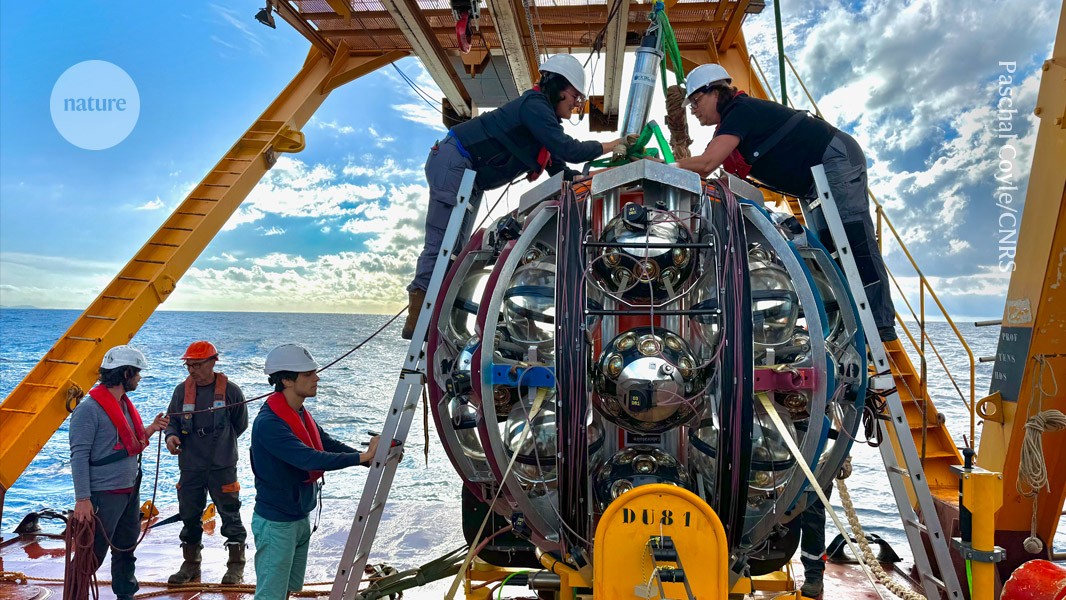Record-breaking neutrino is most energetic ever detected

Although still under construction, the sea-floor KM3NeT detector spotted a neutrino 20 times more powerful than any previously detected

Engineers prepare to add a KM3NeT module to the network of sea-floor detectors. Credit: Paschal Coyle/CNRS
Astrophysicists have observed the most energetic neutrino ever. The particle — which probably came from a distant galaxy — was spotted by the Cubic Kilometre Neutrino Telescope (KM3NeT), a collection of light-detecting glass spheres on the floor of the Mediterranean Sea, on 13 February 2023. Researchers monitoring the telescope did not notice the detection until early 2024, when they completed the first analysis of their data. They unveiled it as a potentially record event last year at a conference in Milan, Italy, but did not disclose details such as the timing, direction or energy of the neutrino.
“We had to convince ourselves that it wasn’t something strange or weird with the telescope,” says Paschal Coyle, a neutrino physicist at Aix-Marseille University in France and KM3NeT spokesperson. The result was published on 12 February in Nature1, and will be described in four preprints due to be posted on the arXiv preprint server.
High-energy neutrinos
Neutrinos are electrically neutral particles more than one million times lighter than an electron. They are typically produced in nuclear reactions such as those at the centre of the Sun, from which they emerge with energies on the order of millions of electronvolts (106 eV). But for more than 10 years, researchers have been recording neutrinos carrying unprecedented energies of up to several quadrillion electronvolts (1015 eV, or 1 petaelectronvolt), which are thought to originate in distant galaxies. (The most energetic particle ever detected, at 320,000 PeV, was not a neutrino but a cosmic ray dubbed the Oh-My-God particle.)
KM3NeT consists of strings of sensitive light detectors anchored to the sea floor at a depth of around 3,500 metres off the coast of the Italian island of Sicily, as well as in a second, smaller array near Toulon, France. These sensors pick up light emitted by high-energy, electrically charged particles such as muons. Muons are continuously raining down on Earth’s surface, because they are produced when cosmic rays hit air molecules. But occasionally, a cosmic neutrino that smashes into the planet’s surface also produces a muon.
In the February 2023 event detected by the Sicily observatory, the team estimated that the muon carried 120 PeV of energy, on the basis of the unusual amount of light it produced. The particle’s path was close to horizontal with respect to Earth’s surface and travelled eastwards, towards Greece.

Source: Ref. 1Source: Aiello, S. et al. Nature 638, 376–382 (2025).
Enjoying our latest content?
Login or create an account to continue
- Access the most recent journalism from Nature's award-winning team
- Explore the latest features & opinion covering groundbreaking research
or
Sign in or create an accountdoi: https://doi.org/10.1038/d41586-025-00444-1
Read the related News & Views: Neutrino barrels through deep waters near Sicily
This story originally appeared on: Nature - Author:Davide Castelvecchi


















